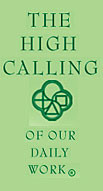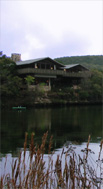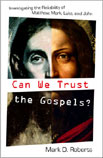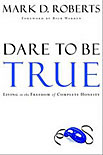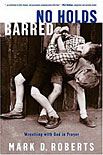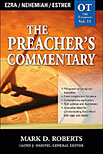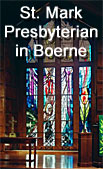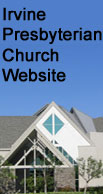« F.A.Q. Format | Home | Standards for Evaluating the Reliability of Gospel Manuscripts »
The Relationship between Existing Manuscripts and the Original Compositions
By Mark D. Roberts | Sunday, June 24, 2007
The documents we know as Matthew, Mark, Luke, and John were written sometime in the second half of the first century A.D. (I’ll say more about the dating of the Gospels in chapter 4.) They were written on scrolls of papyrus (a rough, paper-like substance). Papyrus was popular because it was readily available and relatively inexpensive. But, unfortunately, it wasn’t especially durable. Thus it is highly unlikely that any of the original Gospel manuscripts, called by the technical term autographs, exist today. Probably, the biblical autographs were worn out through use, though they could also have been misplaced by absentminded church leaders, destroyed by persecutors of the early Christians, or even eaten by critters.
Because ancient documents tended to have a relatively short shelf life, people who valued them had a way of preserving their contents: copying. Professional copyists, called scribes, would copy the words of one text into a fresh papyrus or parchment (a longer lasting material made from animal skins). Their training taught the scribes to minimize errors and maximize accuracy.
Yet copying manuscripts was not a slavish task, with scribal accuracy matching modern photocopy technology. At times scribes would make intentional changes as they copied. For example, they would correct what they believed to be a spelling error in their source text. And even the best of scribes also sometimes made unintended errors. Thus the best extant manuscripts of the Gospels are likely to differ in some measure from the autographs.
Moreover, it is probable that many of the first copies of the Gospels were made, not by professional scribes, but by literate lay copyists. As the early church rapidly expanded throughout the Roman world in the first centuries A.D., there was a pressing need for multiple copies of authoritative Christian documents, including Matthew, Mark, Luke, and John. Nonprofessional copyists must have stepped in to meet this need.
The fact that the original Gospel manuscripts have not survived to this day, combined with the fact that for centuries the text was passed on through a careful but imperfect process of copying, makes us wonder whether we can trust that the Greek text we have today looks anything like what the authors originally wrote down. Can we know what the original Gospel manuscripts actually said?
Topics: Can We Trust the Gospels? |
Comments
Thanks for your willingness to make a comment. Note: I do not moderate comments before they are posted, though they are automatically screened for profanities, spam, etc., and sometimes the screening program holds comments for moderation even though they're not offensive. I encourage open dialogue and serious disagreement, and am always willing to learn from my mistakes. I will not delete comments unless they are extraordinarily rude or irrelevant to the topic at hand. You do need to login in order to make a comment, because this cuts down on spam. You are free to use a nickname if you wish. Finally, I will eventually read all comments, but I don't have the time to respond to them on a consistent basis because I've got a few other demands on my time, like my "day job," my family, sleep, etc.
You must be logged in to post a comment.


